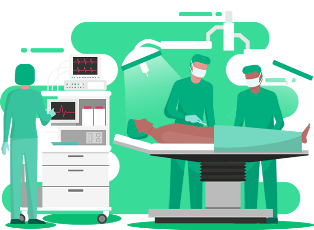 The field of cosmetic surgery has come a long way. The first ever plastic surgery was believed to have been performed in ancient Egypt, it was a plastic repair of a broken nose. However, the world of plastic surgery, as we know today, came to be in the wake of World War One, when many people and soldiers were suffering from severe injuries and disfigurations. That opened the door for many pioneering procedures, techniques, and technologies. Cosmetic surgeries and technology have actually been going hand in hand for the past couple of decades revolutionizing the field. Here are some of the best technological advances in cosmetic surgery:
The field of cosmetic surgery has come a long way. The first ever plastic surgery was believed to have been performed in ancient Egypt, it was a plastic repair of a broken nose. However, the world of plastic surgery, as we know today, came to be in the wake of World War One, when many people and soldiers were suffering from severe injuries and disfigurations. That opened the door for many pioneering procedures, techniques, and technologies. Cosmetic surgeries and technology have actually been going hand in hand for the past couple of decades revolutionizing the field. Here are some of the best technological advances in cosmetic surgery:
Laser Skin Rejuvenation
Getting rid of wrinkles, hyperpigmentation, uneven skin tones, pores, acne scars and sun damage is a dream come true for most people. Some choose the long-term facial cream treatment, which might give the awaited results, or might not, while others choose cosmetic surgery. One of the advanced technologies that are used to solve these problems is laser and more specifically CO2 laser treatment. As explained by the specialists at peoriacosmeticsurgery.com, it is a procedure that vaporizes the outer layer of the skin in a controlled manner, a process called ablation. After the skin heals from being ablated, the skin produces new collagen, which in turn heals the aforementioned skin problems.
Tissue Engineering
No, it does not only happen in sci-fi movies and books anymore. Tissue engineering is a groundbreaking technology that is now an actual possibility. In 2017, scientists and doctors saved the life of a 7-year-old boy with genetic disease using engineered tissues. The possibilities of using this technique in plastic and cosmetic surgeries are endless as it gives surgeons the freedom to manipulate tissues without the limitation of available tissues. Tissue engineering can also reduce recovery time while providing more options for patients such as using nasal and auricular cartilage tissue engineering. The Medical Research Council have stated that tissue engineering alongside regenerative medicine “holds the promise of revolutionizing patient care in the twenty-first century.”
Endoscopic Facelift
The biggest disadvantage of traditional facelift surgery is the possible excessive scarring, which is discouraging for most. Who would want to improve the way they look, only to ruin it in other areas and make it obvious that the person has undergone a cosmetic surgery. Here is where the endoscopic facelift procedure comes in handy. Instead of long incisions running from the patient’s forehead to their ear, this procedure requires only 4mm-5mm incisions at the temples and scalp. Therefore, scars are almost non-existent and incisions heal fast. Another benefit of endoscopic facelifts is a minimal risk of permanent face numbness.
3D Printing
3D printing technology has been used in the world of cosmetic surgeries to give patients a materialistic view of the end result of their surgeries, to make them see and feel how they will end up looking, but it does not stop here. The possibility of actually printing skin tissues for plastic surgery procedures is quickly becoming a potential reality. Yes, it is still expensive and experimental but the doors it can open for both doctors and patients are endless.
Minimal Invasive Procedures
The greatest accomplishment of modern-day technology when it comes to plastic and cosmetic surgeries is that it has introduced the possibility of minimally invasive procedures. Facelifts are not the only procedure elevated with endoscopic techniques – brow lift, flap elevation and carpal tunnel release are also now performed using it. Minimal invasive procedures guarantee less scarring, shorter incisions, quicker recovery, reduced costs and even less post-surgical pain.
